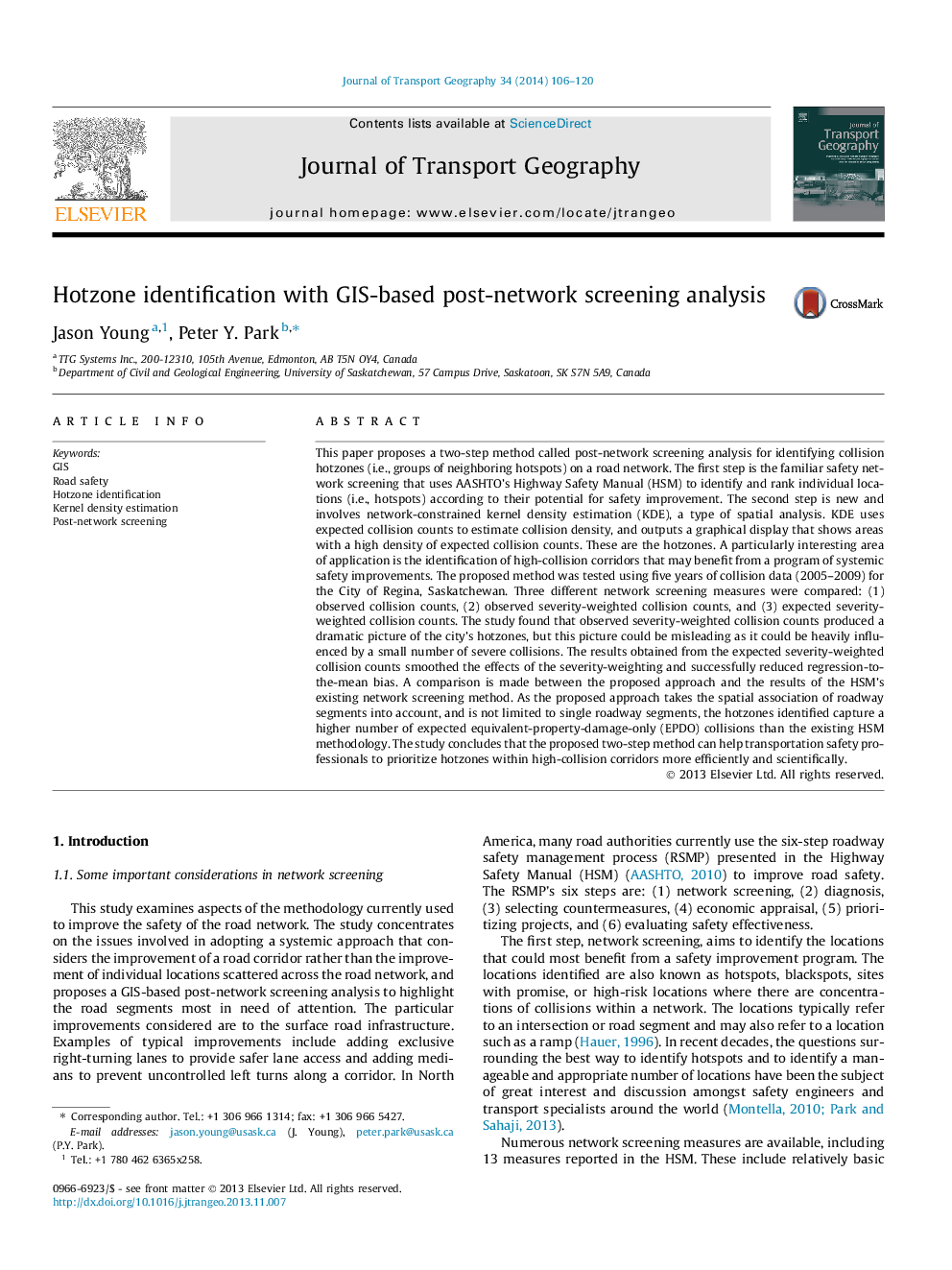| کد مقاله | کد نشریه | سال انتشار | مقاله انگلیسی | نسخه تمام متن |
|---|---|---|---|---|
| 7486246 | 1485433 | 2014 | 15 صفحه PDF | دانلود رایگان |
عنوان انگلیسی مقاله ISI
Hotzone identification with GIS-based post-network screening analysis
دانلود مقاله + سفارش ترجمه
دانلود مقاله ISI انگلیسی
رایگان برای ایرانیان
کلمات کلیدی
موضوعات مرتبط
علوم زیستی و بیوفناوری
علوم محیط زیست
علوم زیست محیطی (عمومی)
پیش نمایش صفحه اول مقاله

چکیده انگلیسی
This paper proposes a two-step method called post-network screening analysis for identifying collision hotzones (i.e., groups of neighboring hotspots) on a road network. The first step is the familiar safety network screening that uses AASHTO's Highway Safety Manual (HSM) to identify and rank individual locations (i.e., hotspots) according to their potential for safety improvement. The second step is new and involves network-constrained kernel density estimation (KDE), a type of spatial analysis. KDE uses expected collision counts to estimate collision density, and outputs a graphical display that shows areas with a high density of expected collision counts. These are the hotzones. A particularly interesting area of application is the identification of high-collision corridors that may benefit from a program of systemic safety improvements. The proposed method was tested using five years of collision data (2005-2009) for the City of Regina, Saskatchewan. Three different network screening measures were compared: (1) observed collision counts, (2) observed severity-weighted collision counts, and (3) expected severity-weighted collision counts. The study found that observed severity-weighted collision counts produced a dramatic picture of the city's hotzones, but this picture could be misleading as it could be heavily influenced by a small number of severe collisions. The results obtained from the expected severity-weighted collision counts smoothed the effects of the severity-weighting and successfully reduced regression-to-the-mean bias. A comparison is made between the proposed approach and the results of the HSM's existing network screening method. As the proposed approach takes the spatial association of roadway segments into account, and is not limited to single roadway segments, the hotzones identified capture a higher number of expected equivalent-property-damage-only (EPDO) collisions than the existing HSM methodology. The study concludes that the proposed two-step method can help transportation safety professionals to prioritize hotzones within high-collision corridors more efficiently and scientifically.
ناشر
Database: Elsevier - ScienceDirect (ساینس دایرکت)
Journal: Journal of Transport Geography - Volume 34, January 2014, Pages 106-120
Journal: Journal of Transport Geography - Volume 34, January 2014, Pages 106-120
نویسندگان
Jason Young, Peter Y. Park,